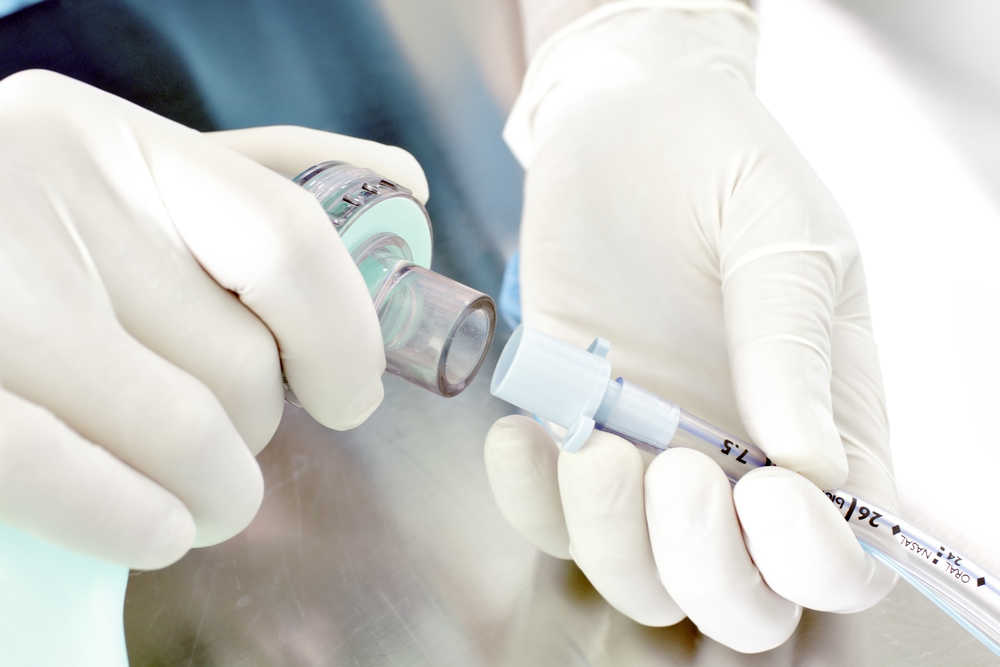Can tapered-cuff tracheal tubes reduce the incidence of VAP?

ICM ARTICLE REVIEW
There’s conflicting data whether tapered-cuff tracheal tubes can reduce leakage around the cuff and hence reduce the incidence of Ventilator-associated pneumonia (VAP). Jailette et al conducted a multicentre cluster randomised cross-over controlled and open-label trial in 10 French mixed-ICUs during a 16-month period comparing PVC tapered-cuff with PVC standard-cuff.
The primary endpoint was abundant gastric microaspiration (defined by a pepsin level >200 ng/ml in >30% of tracheal aspirates). The secondary endpoints were oropharingeal microaspiration (significant salivary amylase in >30% of tracheal aspirates), tracheobronchial colonisation, VAP, ventilator-associated events (VAE), ICU-acquired infection, antimicrobial-free days, invasive mechanical ventilation free-days, length of ICU stay and mortality. The randomisation was performed on the participating ICUs and not on the patients. Treatment allocation was open-label, but pepsin and salivary measurements and VAP diagnosis were blinded.
As a result, they obtained 2739 tracheal aspirates of 303 patients. No significant difference was found between the two groups regarding the primary and secondary endpoints, except for tracheobronchial colonisation that was lower in the tapered cuff group (29.6% vs. 43.3%, p=0.01). There weren’t differences in bacterial concentration though. Paradoxically, there was a trend towards more positive tracheal aspirates in the tapered cuff group (33.1% vs. 11%, p=0.059).
Although having a robust design and a comprehensive and complex statistical analysis, there were some limitations that might explain the discrepancies. The most important were:
- The definition used for abundant microaspiration was based on a previous study by the same group. And microaspiration of endogenous bacteria (from the subglottic area) could not be differentiated from exogenous bacteria (from ventilator circuit and tracheal tube).
- The samples were obtained only within the first 48 hours (~ 20% of duration of mechanical ventilation).
- Two-thirds of screened patients were excluded because intubation was performed before ICU admission
Other limitations include: Sub-glottic secretion drainage was not used (evidence not strong enough when designing the study). VAP and VAE incidence was lower than expected. And although VAP carebundles were recommended, the adherence wasn’t measured.
Take home message
Tapered-cuff tracheal tubes do not reduce significant microaspiration of gastric contents during the first 48h of intubation. Their use is associated with reduced tracheobronchial colonisation, however not with reduced VAP/VAE.
Article review for the ESICM Journal Review Club on behalf of the Pneumonia-WG provided by Dr. Barbara Borgatta.
References
Jaillette E, Girault C, Brunin G, Zerimech F, Behal H, Chiche A, Broucqsault-Dedrie C, Fayolle C, Minacori F, Alves I, Barrailler S, Labreuche J, Robriquet L, Tamion F, Delaporte E, Thellier D, Delcourte C, Duhamel A, Nseir S; BestCuff Study Group and the BoRéal Network. Impact of tapered-cuff tracheal tube on microaspiration of gastric contents in intubated critically ill patients: a multicentre cluster-randomised cross-over controlled trial. Intensive Care Med. 43, pages1562–1571 (2017).